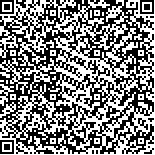| This article has been:Browse 1927Times Download 3526Times |

scan it! |
|
|
| DOI:doi:10.13522/j.cnki.ggps.20180654 |
|
| Water Flow and Nitrogen Distribution in Soil under Negative-pressure Irrigation |
|
WU Chao, ZOU Xin, WANG Hui, HE Mingyu, LUO Jie, OUYANG Yaojia
|
|
1.Oriental Institute of Science and Technology, Hunan Agricultural University, Changsha 410128, China;2.College of Engineering, Hunan Agricultural University, Changsha 410128, China
|
| Abstract: |
| 【Objective】 Negative-pressure irrigation is a new irrigation technology and in this paper, we investigate its impact on water flow and nitrogen distribution in red soil under different combinations of irrigation amount and nitrogen application. 【Method】Ammonium nitrate was used in the experiment and we compared six concentrations: 0, 10, 15, 20, 25 and 30 mg/L, under two water pressure treatments: zero pressure and pressure at 1/2 of the limit negative head height. 【Result】 Application of ammonium nitrate facilitated water infiltration. Under zero and negative-pressure irrigation, water movement in the horizontal and vertical direction reached maximum when the ammonium nitration concentration was 25 and 15 mg/L respectively, at which the maximum cumulative infiltration increased by 269% and 300% and the associated infiltration rate increased by 238% and 218% respectively. Both nitrate and ammonium in soil increased significantly (p<0.05). Under zero and negative pressure, the maximum nitrate content in soil increased by 805% and 775% respectively, while the maximum ammonium content increased by 1 337% and 1 042% respectively. After the irrigation ceased, the distances the wetting front moved in the horizontal/vertical direction and the cumulative infiltration under zero pressure were more than that under negative pressure. At the same location, nitrate, ammonium and soil moisture under negative pressure were higher than those under zero pressure.【Conclusion】 Negative-pressure irrigation significantly impedes water movement, thereby reducing cumulative infiltration, water content, nitrate and ammonium in soil. For the two pressures we examined, soil nitrate increased along the infiltration distance as opposed to soil ammonium that decreased along the infiltration distance. |
| Key words: irrigation; integration of water and fertilizer; nitrate nitrogen; ammonium nitrogen; migration patterns; solute transport |
|
|